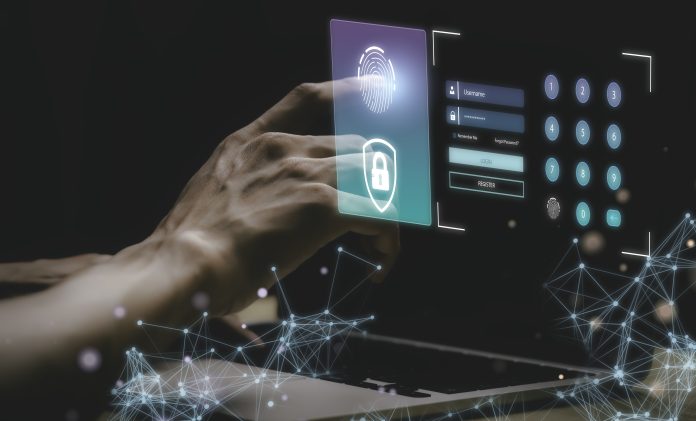Have you ever paused to think about how many passwords you juggle daily? From work tools to banking apps and social media platforms, every password is another potential risk to your privacy. In today’s centralized digital landscape, data breaches, identity theft, and unauthorized tracking are growing concerns for both individuals and businesses.
Enter Digital Identity in Web3, a revolutionary approach that promises to replace passwords and centralized logins with secure, user-controlled authentication. Beyond convenience, it ensures privacy, transparency, and ownership in the digital era.
In this article, we will explore why traditional identity systems are failing, how Web3 identity works, the challenges it faces, and its future in shaping secure digital interactions.
1. The Problem with Today’s Digital Identity
Current digital identity systems are centralized, meaning data is stored and managed by companies or platforms. This model has significant drawbacks:
- Data Breaches: Centralized storage makes sensitive information a lucrative target for hackers.
- Privacy Loss & Tracking: Big tech platforms track user behavior, often without explicit consent.
- Password Fatigue: Users manage multiple accounts and passwords, increasing vulnerability.
These problems highlight the urgent need for a more secure, user-centric solution. Centralized logins are no longer sustainable in an era of cyber threats and growing privacy concerns.
2. What Is Decentralized Identity (DID)?
Decentralized Identity (DID) is a blockchain-based system that allows users to own, manage, and verify their digital identity without relying on centralized authorities. Unlike traditional systems, DID places control directly in the hands of users while maintaining security, privacy, and trust.
Key Features of DID
- User-Owned Identity:
Individuals control their personal information rather than a third party. This minimizes dependency on centralized databases, reducing the risk of data breaches and misuse. - Verifiable Credentials (VCs):
VCs are cryptographic proofs that validate identity or claims without exposing sensitive personal data. For example, you can verify your age or professional qualifications without revealing full birthdates or certificates. - Trustless Verification:
Identity verification occurs directly via blockchain, eliminating the need for intermediaries and ensuring authenticity. - Global and Portable:
DIDs are unique and can be used across multiple platforms and borders. Whether logging into financial services, educational platforms, or government portals, your decentralized identity travels with you.
Why DID Matters
- Enhanced Security: Blockchain ensures credentials are immutable and tamper-proof.
- Privacy-First: Users control what data is shared.
- Reduced Dependence: Minimizes reliance on companies like Google or Facebook.
- Business Efficiency: Organizations can streamline KYC, reduce fraud, and lower compliance risks.
DID is more than a technological advancement; it’s a paradigm shift towards self-sovereign digital identity, empowering individuals while creating trust in digital interactions.
3. How Web3 Identity Works
Web3 identity applies DID principles to create secure, passwordless, and decentralized authentication.
Core Mechanisms
- Wallet-Based Authentication:
Digital wallets like MetaMask, Phantom, or Trust Wallet act as identity hubs. Instead of usernames and passwords, wallets store cryptographic keys and credentials securely. - Passwordless Access:
Private keys replace passwords. Users authenticate directly without relying on traditional credentials, reducing risks like phishing or credential leaks. - Selective Data Sharing:
Users control what information is shared with platforms. For instance, proving membership in a professional association without revealing unrelated personal details. - Blockchain Verification:
Services verify credentials against blockchain records, ensuring authenticity and immutability without centralized control.
Benefits in Practice
- Security: Reduces risks of data breaches and phishing attacks.
- Privacy: Users retain full control over their personal information.
- Convenience: Wallet-based logins simplify access across platforms.
- Trust: Blockchain verification ensures that shared credentials are legitimate and untampered.
Web3 identity empowers users as custodians of their own identity, eliminating reliance on centralized systems.
4. Benefits for Users and Businesses
For Users:
- Full Ownership: Users control their data entirely.
- Enhanced Privacy: Minimal tracking or exposure to third-party platforms.
- Passwordless Access: Simplifies daily logins and reduces digital friction.
For Businesses:
- Reduced Compliance Risk: Easier alignment with privacy laws like GDPR or DPDPA.
- Efficient KYC: Streamlined verification processes reduce fraud and overhead.
- Lower Operational Costs: Less password management and account recovery support.
Web3 identity fosters mutual trust, making interactions safer, faster, and more reliable.
5. Real-World Use Cases
- Blockchain Wallet Logins: Users authenticate on websites using wallets instead of passwords.
- Education: Universities issue blockchain-verified diplomas, allowing employers to validate credentials efficiently.
- Healthcare: Patients store medical records securely, sharing only necessary data with providers.
- Government Services: Digital IDs for citizens, reducing fraud in services like licensing or e-voting.
- Financial Services: Banks and fintechs streamline KYC while maintaining secure, verifiable identities.
These use cases show DID and Web3 identity in action, bridging digital trust gaps across industries.
6. Challenges & Limitations
While promising, Web3 identity and DID face several challenges:
- Key Management Risks: Losing private keys can permanently lock access. Users need secure backup solutions.
- Slow Adoption: Many users are accustomed to Web2 login systems and hesitant to switch.
- Regulatory Ambiguity: Policies governing decentralized identity are still evolving globally.
- Interoperability Issues: DIDs must work across blockchains and platforms, which is still complex.
- Technical Complexity: Businesses may need significant technical expertise to integrate DID solutions.
Despite these challenges, advancements in multi-chain protocols, wallet solutions, and global standards are gradually overcoming these barriers, making DID increasingly practical for enterprise adoption.
7. The Future of Digital Identity
The future of digital identity is secure, decentralized, and user-first, with trends shaping this evolution:
1. Self-Sovereign Identity (SSI)
- SSI allows users to fully own and manage their digital credentials across platforms and borders.
- Eliminates dependence on centralized authorities, creating a truly user-first identity ecosystem.
2. Integration with Biometrics & AI
- Biometric verification (fingerprints, facial recognition) enhances security and usability.
- AI-driven verification can detect fraud, automate authentication, and protect privacy.
3. Global Standards and Frameworks
- W3C DID: Universal framework for decentralized identity creation and verification.
- EU EBSI: Interoperable identity solutions for government and cross-border services.
4. Passwordless, Seamless Experience
Users will access platforms without passwords, relying on wallets and cryptographic keys. Digital identity will become portable, universally recognized, and frictionless.
5. Business Opportunities
- Streamlined KYC and reduced fraud.
- Enhanced customer trust.
- Opportunities for cross-platform collaboration and global digital ecosystems.
The vision is clear: a secure, decentralized, and portable identity system that reshapes trust in the digital world.
Conclusion
Digital Identity in Web3 is not just a technological innovation; it’s a paradigm shift in authentication and data ownership. By eliminating centralized logins and empowering users, Web3 identity improves security, privacy, and operational efficiency for businesses. The era of passwords is ending, giving way to a decentralized, secure, and user-controlled login ecosystem.
FAQs
Q1. What is Digital Identity in Web3?
It’s a blockchain-based identity model where users own and manage their credentials securely, without centralized platforms.
Q2. How does it differ from traditional logins?
Instead of passwords and centralized storage, it uses cryptographic keys and blockchain verification.
Q3. What are Verifiable Credentials (VCs)?
VCs are cryptographic proofs of identity that allow verification without exposing private data.
Q4. What risks exist with Web3 identity?
Mainly key loss, regulatory ambiguity, and interoperability challenges.
Q5. Can businesses implement Web3 identity now?
Yes, many sectors, including fintech, edtech, and government services, are experimenting with DID.Q6. Is Web3 identity GDPR-compliant?
Yes, it aligns with privacy-first regulations like GDPR and India’s DPDPA.













